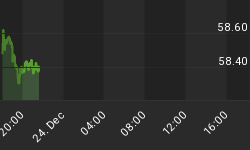Well, that was a game changer. Ben Bernanke and the FOMC surprised the markets with a QE that was significant in scope, unsterilized, and open ended. And if that doesn't bring down unemployment, then they will do even more. As I stated last week: "investors will get to see how much Bernanke intends to put the 'pedal to the metal'." Don't worry he is flooring it.
The obvious game changer is that the Fed is "all in". The not so obvious game changer is the expectation this creates for investors. For example, what happens if the market falls 5% at any point over the next 6 months? Will investors clamor for more QE like they did following the 8% drop in the SP500 back in May, 2012? Wait a minute, investors can't expect more QE because we already have too much of it already. So what is going to fill in that gap if the Federal Reserve isn't there to come to the rescue? Furthermore if the markets do fall in the face of this monumental QE, why would investors want more of something that doesn't work? This whole rally has been predicated on the Fed acquiescing to the wishes of the markets. The Fed has acted and now there is nothing left to front run. Now that QE is here, the markets better go up or else!!
This past week on the strength of this historic QE, the SP500 has broken out to new highs. Breakouts also imply game changer as well as prices have moved into new, uncharted territory. A break out must "stick". In other words, if this turns into a failed breakout, then it is look out below especially since the Fed has been taken out of the picture. After all, it is not like investors will be asking for more QE anytime soon. The sentiment picture remains consistent with a market top. Insiders are selling and the "dumb money" continues to buy into the belief that the Fed can fix the economy and the markets.
The "Dumb Money" indicator (see figure 1) looks for extremes in the data from 4 different groups of investors who historically have been wrong on the market: 1) Investors Intelligence; 2) MarketVane; 3) American Association of Individual Investors; and 4) the put call ratio. This indicator is bearish, and just above the extremely bullish level.
Figure 1. "Dumb Money"/ weekly
Figure 2 is a weekly chart of the SP500 with the InsiderScore "entire market" value in the lower panel. From the InsiderScore weekly report: "We continue to see moderately high levels of selling across the market but as we've noted the past few weeks, from a historic perspective the volume of activity is not particularly egregious. Nonetheless, conviction amongst sellers is obviously far greater than conviction amongst buyers and the quality of buying events has been generally poor over the past several weeks."
Figure 2. InsiderScore "Entire Market" value/ weekly
Figure 3 is a weekly chart of the SP500. The indicator in the lower panel measures all the assets in the Rydex bullish oriented equity funds divided by the sum of assets in the bullish oriented equity funds plus the assets in the bearish oriented equity funds. When the indicator is green, the value is low and there is fear in the market; this is where market bottoms are forged. When the indicator is red, there is complacency in the market. There are too many bulls and this is when market advances stall. Currently, the value of the indicator is 71.64%. Values less than 50% are associated with market bottoms. Values greater than 58% are associated with market tops. It should be noted that the market topped out in 2011 with this indicator between 70% and 72%.
Figure 3. Rydex Total Bull v. Total Bear/ weekly
TheTechnicalTake offers a FREE e-newsletter: HERE
















